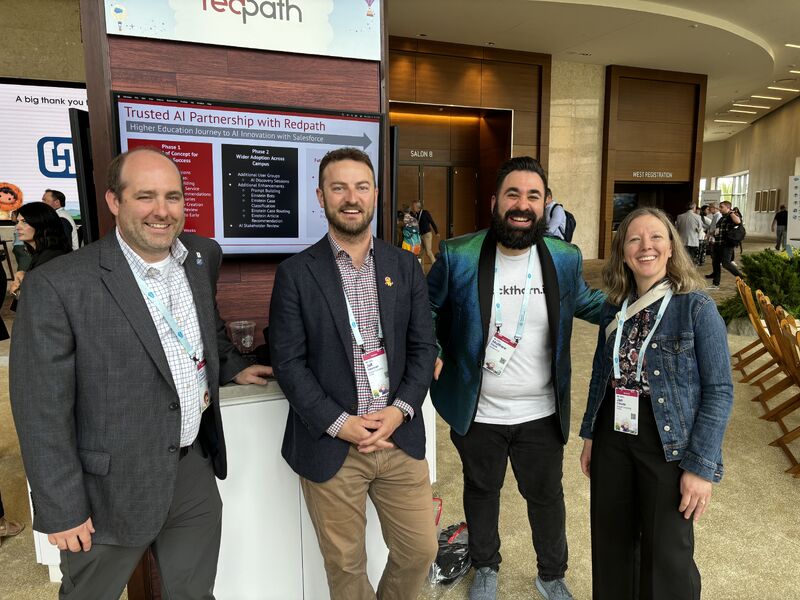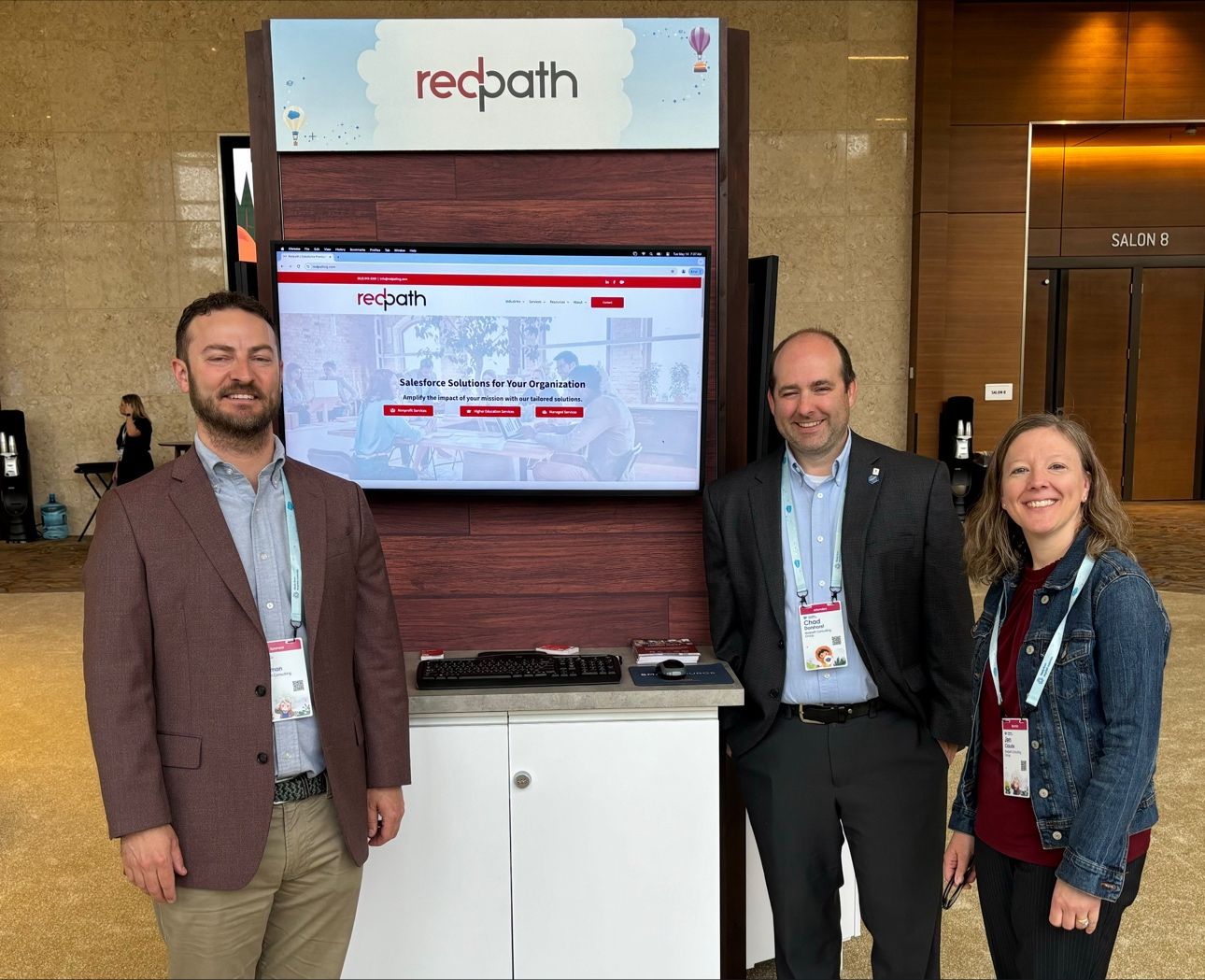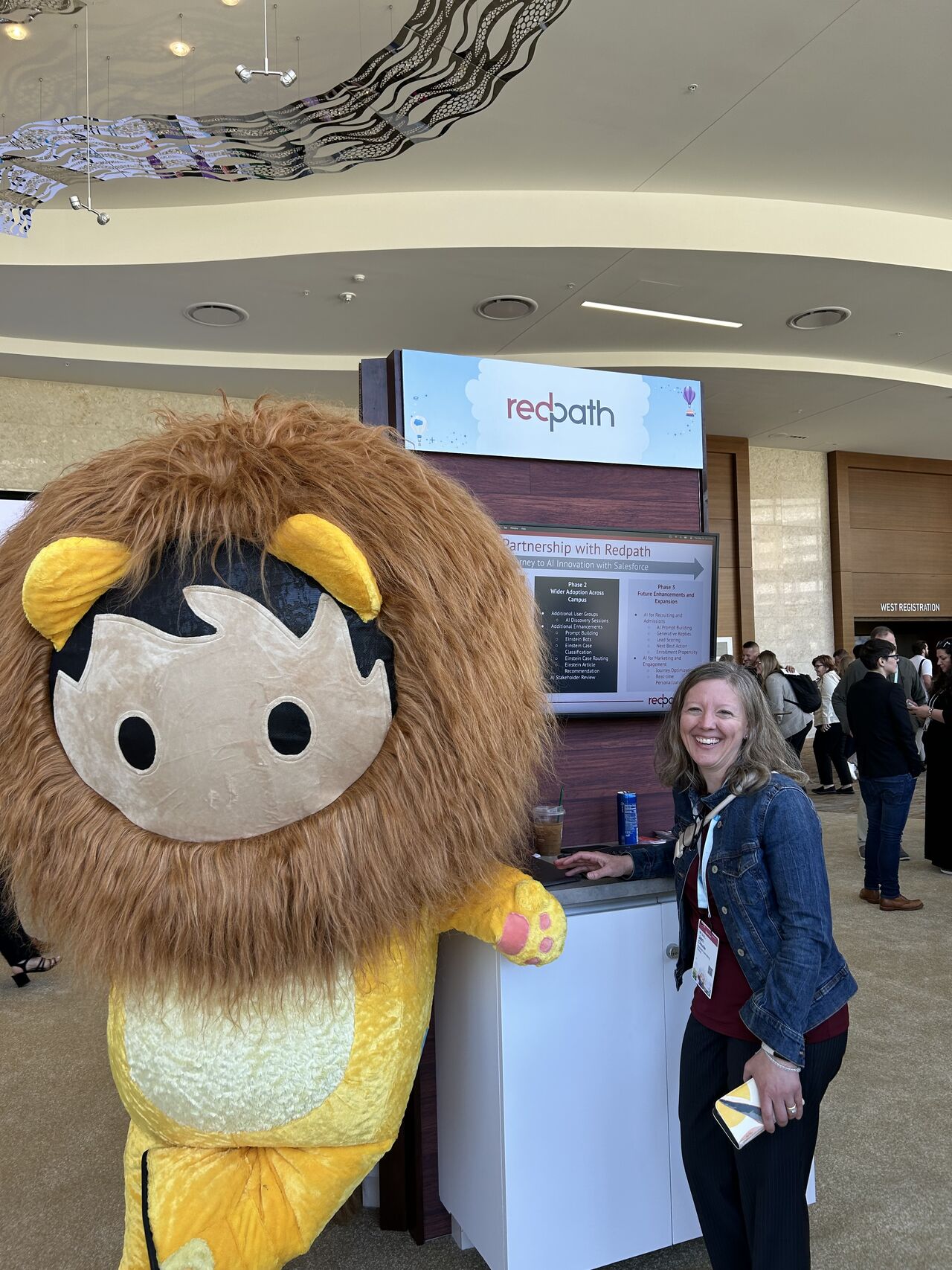Our 3 Takeaways from Salesforce Education Summit

Educators are abuzz with excitement
Nearly 2000 trailblazers from educational institutions throughout the world traveled to sunny San Diego to immerse themselves in the latest innovation from Salesforce, peer institutions, and the broader ecosystem. Having worked in Higher Education for nearly ten years, I’ve always appreciated the passion that higher education professionals bring on a daily for serving their students, constituents, and driving scholarship and innovation forward
One of my absolute favorite things about the education industry is the willingness of industry professionals and institutions to share best practices and offer true collaboration with one another. Although some of these schools may be competing with each for students, faculty or in research; you wouldn’t know it from the experience at Education Summit as collaboration and information flowed freely between staff members and institutions alike.
Education Product Team Continues to Build Key Education Cloud Functionality
There’s definitely a lot to unpack from the Education Summit Keynote and the subsequent Education Cloud Roadmap sessions, but here are a few of our favorite new features:
Finally, a Prescriptive Data Model for Recruiting!
- For as long as I can remember, there’s truly never been a best practice for recruiting students on the Salesforce platform. Schools historically used a variety of approaches and Salesforce objects to model prospective students. Historical examples include the use of Leads, Contacts, Cases, Affiliations, Opportunities, Interactions and a slew of custom objects.
- Salesforce finally put its stake in the ground and modeled the Opportunity object and its related functionality for managing the Enrollment Funnel. While I certainly loved the innovation across the education system, it’s great to have a point of view and designated best practices for recruiting students on the Salesforce platform.
Learner Progress and Intelligent Degree Planning
- Ensuring student success continues to be a strong theme from the Education Cloud product team. Specifically, I’m excited about two new features coming to Education Cloud in June, that have historically been found in legacy SIS systems.
- First, the new Learner Progress View functionality will allow academic advisors and staff members to easily audit degree process and identify the required steps to ensure students complete their degree requirements.
- Second, the new Intelligent Degree Planner is a drag and drop tool that will help students proactively plan their course schedule and preferred learning path based on their specific program prerequisite and required courses.
Mentor Filtering and Selection
- One of the newest feature areas for Education Cloud is its Mentoring functionality that allows schools to connect students to alumni to assist with academic guidance, career development, and skill development. The new Mentor Filtering and Comparison tools make it far easier to match students with the right mentor by offering a side by side visual comparison of the student’s needs and the skills and background of potential mentors.
Everyone is excited about AI
Aside from the keynote and the discussion with Andrea Aggasi, one of the most attended sessions of the conference was the Education in the AI Era fireside chat with Professor David Danks, a leading scholar at the intersection of AI’s impact on society, from the University of California, San Diego.
Professor Danks led a thoughtful discussion around how AI is being used initially on campus, but also gave a great framework for considering the deployment of AI. His AI decision-making framework started and ended with a simple question to ask yourself, “Should We”? In the educational context, AI should be used to empower and improve the human experience, but much thought needs to go into the types of outcomes that we are trying to achieve.
For example, AI could be used as a replacement for some in-person instruction and potentially at the expense of increasing the student to teacher ratio. While AI may be able to replace some components of the instruction, we know from research that students tend to perform better when the student to teacher ratio is lower and there is more teacher to student interaction. Stepping back asking “Should we do this?”, should provide at least a momentary pause to think through the ramifications of this approach.
Certainly, AI is coming whether we like it or not, or whether we think we are ready for it. Regardless, we need to think through the ramifications carefully to ensure the best possible outcomes.
With the rapid evolution of technology, Salesforce solutions are ever-changing and improving features. Contact our team for up-to-date information.





